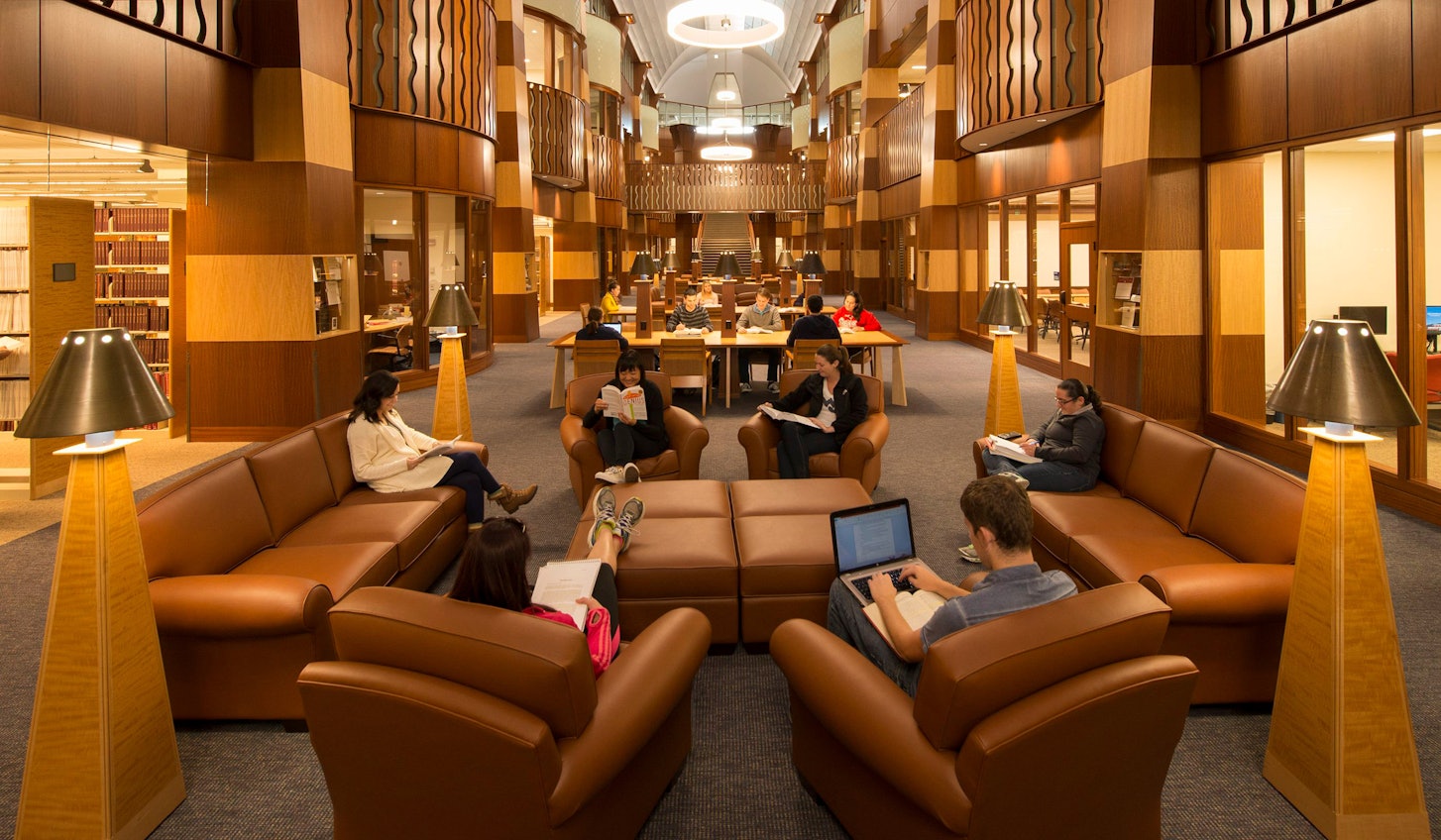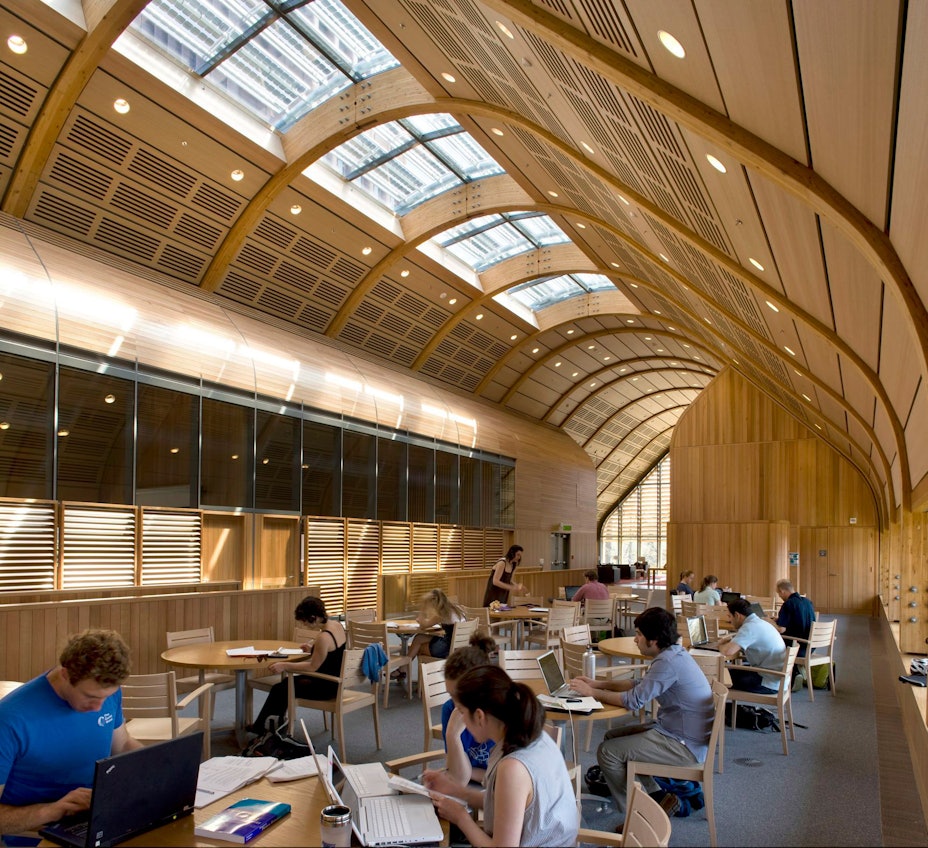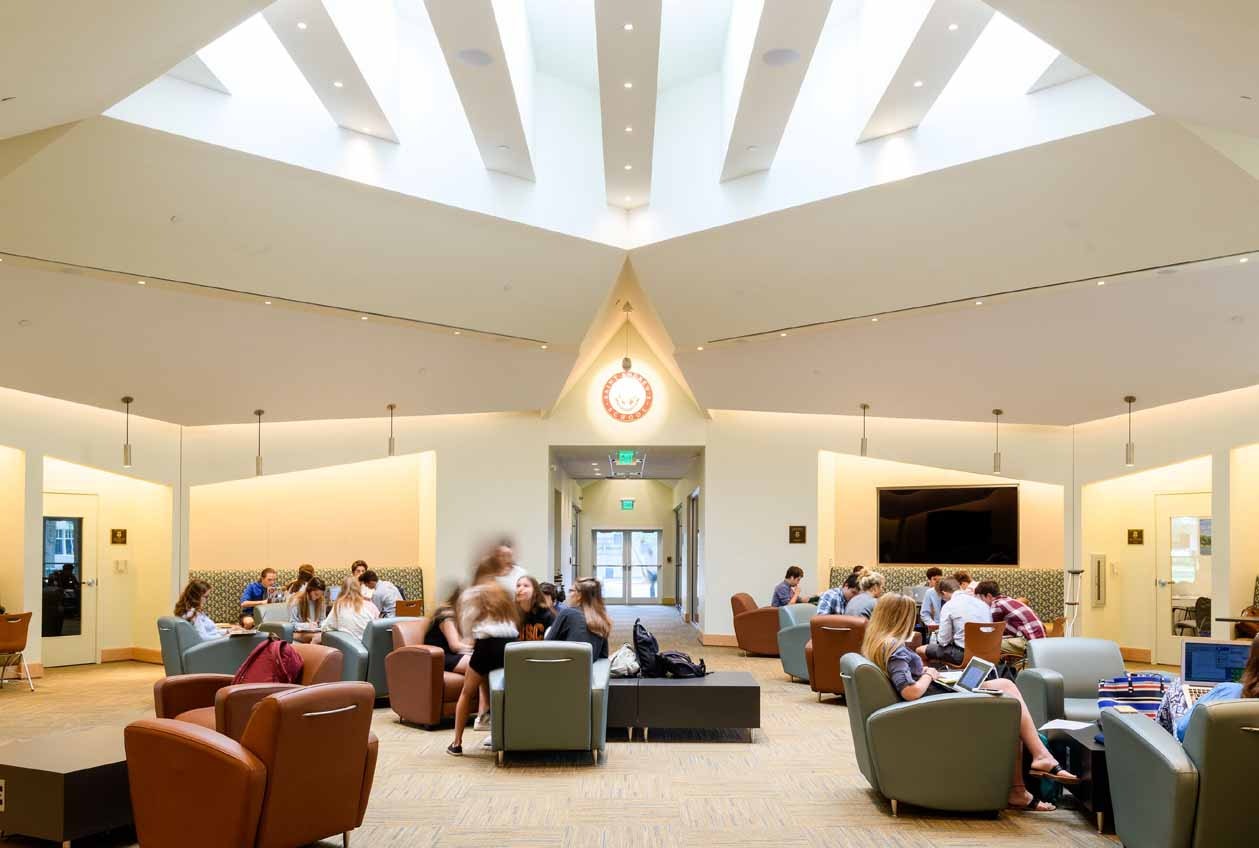Interior Design
Interior Design
For us Interior Design means selection, or design, of movable furnishings, usually undertaken alongside building-making. We see interiors as integral to the experience of those using a building. Interiors suggest how architecture is to be used, enjoyed, and treated. Furnishings should collaborate with their buildings to set a stage for living and never be an afterthought. We keep them in mind from the very beginning of design.
Interior Design: Topic
Calibrating Size
We ask clients what furnishings they expect for each room. Early on we may not have defined the aesthetics, but we still need to know sizes and arrangements in order to right-size our spaces. For instance, we prepare early table and chair studies to test footprints of institutional dining rooms. We consider optimal number of seats per table to deliver just what our clients want for the dining experience. We consider space intervals between tables to ensure ease of circulation. We look at placements of couches and chairs in lobbies, dorm lounges, and home living rooms to fit the right kind of conversation groupings along with more private places. In short, we calibrate interiors for the needs of each client.
Interior Design: Topic
Settings for Activity
In the past, classrooms almost always had rows of desks facing the teacher and a blackboard. The teacher lectured, and students listened. In the mid-twentieth century, a few schools began noticing that conversation across a single large table fostered engaged learning. Out of that evolved the Harkness Table, an oval seating 12-16 students plus a teacher, with small boards that slid out to allow privacy for tests, each student facing the back of a neighbor.
And planning has evolved from there. Lucky enough to work with the same institutions over many years, we’ve discovered needs change, so we plan multiple arrangements to accommodate it. Many educators now promote experiential, active learning with numerous activities within a single class period. Academic space being expensive to build, the idea is to leverage each classroom for more or less continuous activity using flexible furniture that can be rearranged easily on a weekly, daily, or even hourly basis. That means finding pieces on wheels that nest well.
Interior Design: Topic
The Message of Materials
While we always consider durability and the visual appeal of our interiors, we also recognize that differences in finishes imply differences in behavior. Soft seating suggests relaxation and an invitation to linger. Chairs on wheels imply activity and busy-ness. As one might expect, the harder the seating, the shorter the activity. Fine materials like a walnut-topped table show a respect that is infectious. While we know public institutions require resilient furniture, we try to pick pieces with interesting color and shape so their toughness doesn’t seem to invite a beating. Style of furniture says a lot about the spirit of a place—modern says forward leaning, and historic shows respect for tradition. We often arrange an amalgam of styles to express a place’s vibrancy across the continuum of time.






















